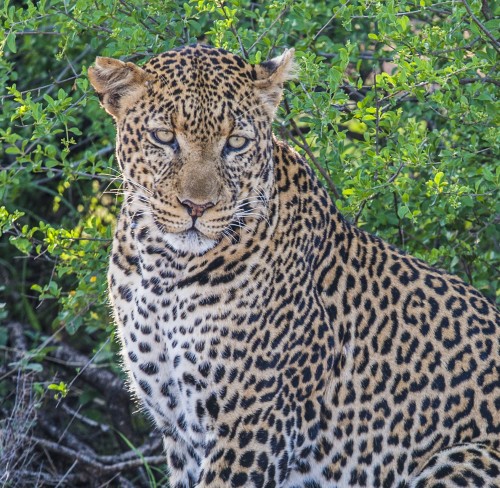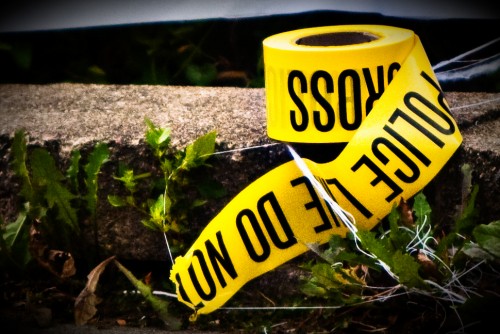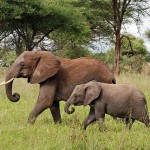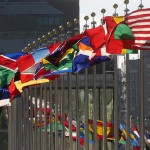
People should know by now that my participation in any meeting, especially one convened by an international organization, will almost inevitably lead to me reflecting upon the current situation and how it might be improved.
Maybe they should stop inviting me to these events? Or maybe I should stop accepting? Whatever, here we go again …
It is maybe best that I don’t identify the organization which most recently requested my participation, particularly as this was something of a behind-the-scenes and ‘closed’ event, but it brought together a fascinating mixture of expertise and experience. It tackled a subject that is, and has been for a long time, very close to my heart.
If one believes the umpteen media, academic and other reports, wildlife trafficking is now the (insert the number of your choice) most significant criminal activity in the world. I will also leave readers to select the crime-types that illegal fauna and flora illicit harvesting and smuggling trail behind. Narcotics seem to generally hold the top spot. However, thereafter, and depending upon who is authoring the article or item, you may be told that it is humans, firearms, counterfeit products, cultural items, or a range of other contraband.
You will also be told that one, or several, of these felonious activities are conducted or exploited by terrorists. Let’s set this aside for the moment, since that deserves an article in itself.
Returning to where wildlife crime sits in the league table of transnational organized crime: Does it really matter?
Narcotics-trafficking has horrendous impacts upon countries, societies and individuals. So does the smuggling of humans and migrants, particularly as it involves, for example, the exploitation of people and their delivery into labour amounting to slavery, prostitution and any number of other despicable abuses.
Trading counterfeit goods incorporates considerably more important matters beyond luxury watches or fashionable handbags; it includes the delivery, consumption and use of fake aircraft parts and medicinal products. In some developing countries, for instance, it is reckoned that more than 30% of anti-malaria tablets may be fakes and utterly useless1. And, what is more, they may be toxic.
The illegal acquisition of culturally-important items robs nations of their heritage and denies the whole world of opportunities to appreciate, and learn from, items that are our general inheritance and should not be in the hands of some rich and unscrupulous collector.
As to firearms, the impact of their falling into the wrong hands is self-explanatory.
Trafficking in wildlife:
- Robs countries, and particularly residents of rural areas, of potential revenue and personal income;
- Risks the spread of disease;
- Impacts upon biodiversity;
- Is bringing some species close to extinction;
- Involves very considerable levels of violence and corruption.
Personally, I am convinced we should target all criminals regardless of what means they choose to rob, pillage and rape us, our communities and our countries. Consequently, rankings or league tables interest me little.
I also believe that we may do ourselves a disservice if we allocate too much priority to specific crime-types; because of the evidence and intelligence indicating that many organized crime groups and networks focus on multiple fields of potential illicit profit. If John M. Sellar is a drug smuggler, and you focus solely on his activities in relation to narcotics, you may miss chances to arrest him when his hand baggage contains a rhino horn. On the other hand, I am firmly convinced that we cannot adequately determine our responses to any form of crime unless we have some measurement and understanding of its prevalence.
The stark truth is, despite the statistics and numbers you may see quoted in a vast range of articles, reports and academic papers, we currently have no accurate overview of wildlife crime.
Anyone who tries to tell you otherwise is speaking rubbish. Or has engaged in extrapolation of existing data that is wholly unreliable. This is despite the best efforts of bodies such as CITES, INTERPOL and the World Customs Organization. Each has encouraged its member countries to submit data on poaching, seizures and other wildlife crime incidents. The response has, overall, been abysmal or so haphazard, irregular and unrepresentative that it makes any analysis next to meaningless.
Issues relating to collecting the necessary data, and the apparent reluctance of nations to supply it, would take too much time (or words) to explain. And they aren’t especially relevant. What is more important, to my way of thinking, is how to solve this.
If you want to know how many drug seizures took place across the globe in 2012, the information is readily available. So too are the numbers of homicides which occurred around the world in recent years, and in which countries. The FBI in America can tell you how many law enforcement officers (local, tribal, State and federal) across the U.S. were killed on duty in 2013; and provide fairly detailed information about the circumstances of each incident.
The figures are available because, with very few exceptions, the countries of the world collect national crime statistics. It is completely logical for them to do so. Their governments, and their citizens, want to know how many people were killed last year, how many women were raped, how many homes were burgled and how many muggings took place. Many countries will also be able to tell you the total of ‘minor’ crimes, such as shoplifting, which occurred. Or how many of the crimes committed in a particular year were racially-motivated. They collect the information because they know it is essential to determine how government responses should be structured, how budget allocations should be determined and, also, to measure the effectiveness of, for instance, policing and judicial corrective measures.
If you can determine how many bottles of shampoo were stolen from a Tesco, Carrefour or 7-Eleven, then doesn’t it make sense to also discern how many tigers were killed or the quantity of indigenous orchids which were illegally-harvested?
Nations also collect ‘mainstream’ crime information as it has become widespread policy to provide it to international agencies such as INTERPOL, the UN Office on Drugs and Crime and the World Customs Organization; the international community has long-recognized that strategies and tactics to combat crime, especially organized crime, need to be determined and coordinated at levels well above those of cities, districts, counties, provinces and nations.
I accept that there is probably just one source for murder and rape statistics – the Police – and that wildlife crime might be responded to, or dealt with, by several more, be that wildlife, fish and game, national parks, forestry, Customs agencies, etc.

But the important point is that it is open to governments to insist that wildlife crime become part of national crime statistics.
When I became a Police officer in 1973, you had to compile details of any crime you handled and on any person you arrested or charged. In those days, the records were on paper, whereas they are now all computerized. Depending upon the crime-type, some details automatically were passed to The Scottish Office and then central UK Government. The equivalent happens today.
However, I have yet to see a call, in the innumerable wildlife crime-related declarations, statements and resolutions adopted in recent years, for governments to make the inclusion of wildlife crime statistics mandatory in national crime data. And their subsequent provision to relevant international bodies.
I referred, in Connecting the Dots, to the importance of obtaining sight of the ‘big picture’. Am I wrong in thinking that this would be a relatively simple way of doing just that?
Why is it we seem, apparently consistently and constantly, to fail in learning lessons from the past? Or seek, instead, to reinvent the wheel? Many of the goals, aims and pledges included in those statements, declarations and resolutions have considerable training, capacity-building, logistical and financial implications. By comparison, is this not something which could be achieved almost overnight? It would, I’d have thought, simply require an adjustment to existing national practices.
There is, of course, a potential down-side to gathering wildlife crime statistics. I think it is difficult to predict anything other than they will make for very depressing reading and will show us the poor job that many nations are doing in combating it. Maybe that’s why the figures aren’t currently available?




